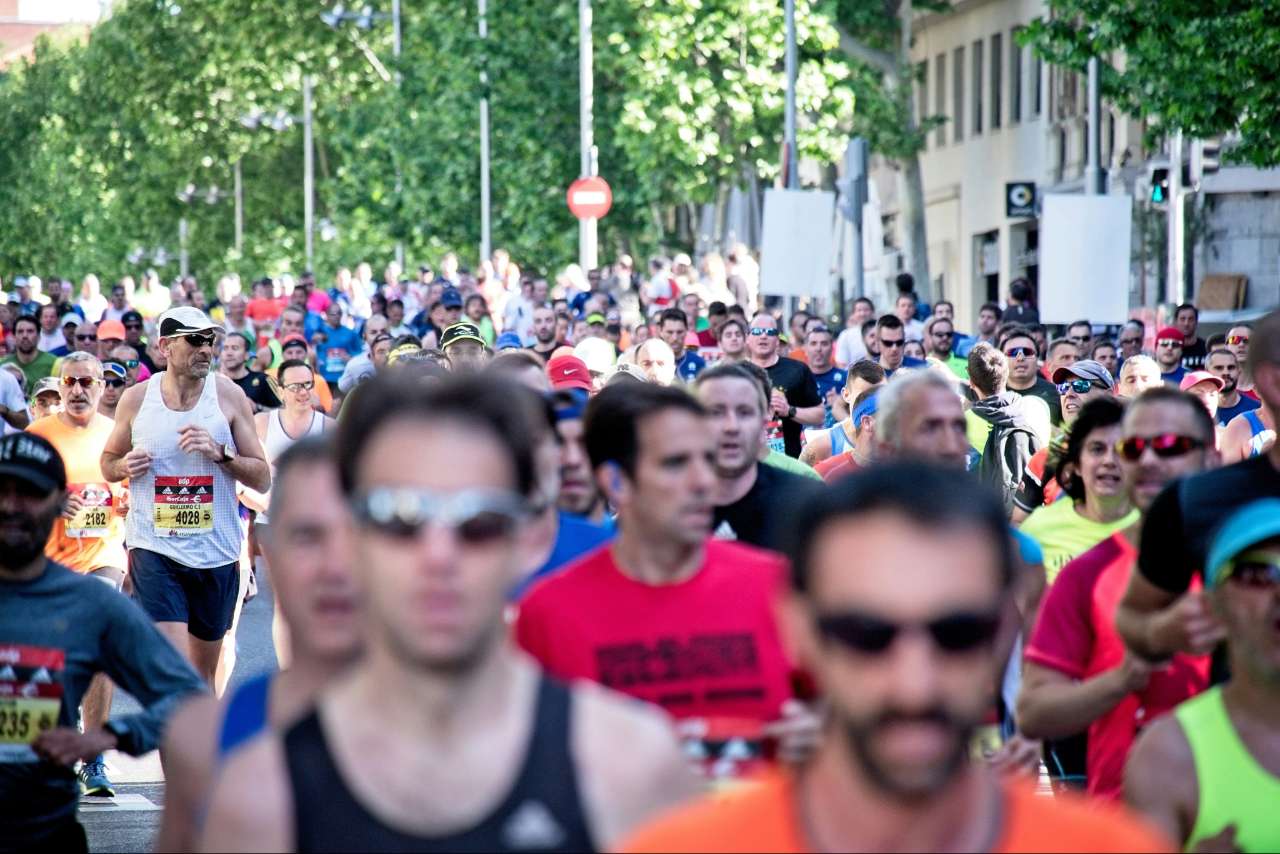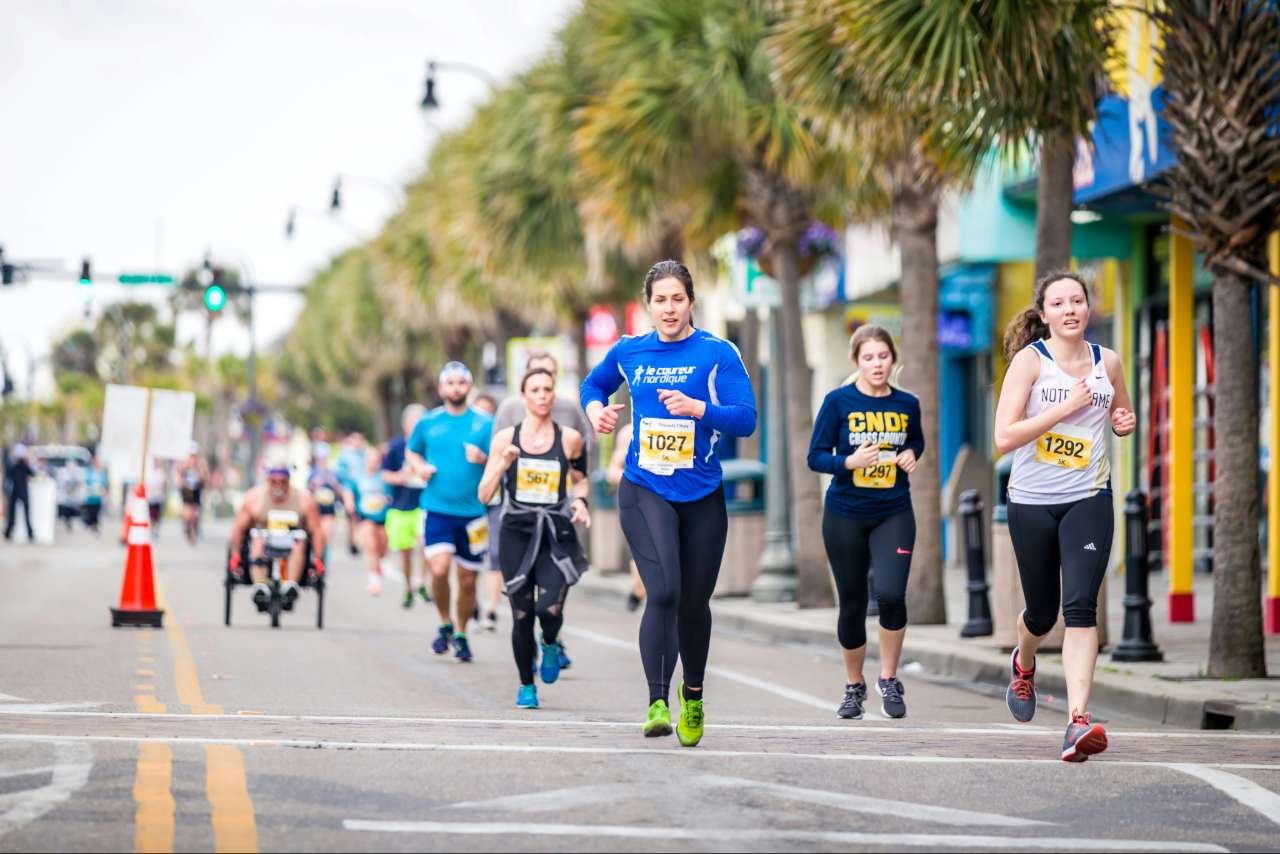When it comes to running, every little detail matters, including the way you tie your shoelaces. Yepp. Lacing up your running shoes properly could be the difference between a PB or a close call, insane comfort or a niggly feeling. Not only is the aim of the game a secure fit, but a cheat code when it comes to preventing discomfort and injuries during every run.
The question is: what is the proper way to tie your laces?
Well, the answer to that is as complex as a carbohydrate because there’s a plethora of lacing techniques out there to choose from, and you have to find the one that works for you. Think of it as an essential part of the journey to being the best runner you can, as you try to find that best style to suit your foot shape and running style.
That’s why we’ve delved into the world of lacing techniques to bring you 10 options that will elevate your running experience to new heights. It’s time to start lacing like a pro:

The Classic Criss-Cross:
If you're a beginner or just prefer a bit of simplicity, the classic criss-cross lacing technique is your go-to option. The most tried and tested method of them all, this has become a staple for most runners, providing a balanced and secure fit.
- Thread the lace through the bottom left eyelet from the outside to the inside of the shoe.
- Cross the lace diagonally to the bottom right eyelet and pull it through to the outside of the shoe.
- Repeat with the other lace, threading it through the bottom right eyelet from the outside to the inside.
- Cross the lace diagonally to the bottom left eyelet and pull it through to the outside.
- Continue the criss-cross pattern, lacing through each set of eyelets until you reach the top.
- Tie a standard bow with the laces to secure the fit.
- Double knot (optional) for added security during your run.
The Heel Lock:
This is for anyone that often experiences heel slippage during runs, because the heel lock technique (aka the runner's loop), can help alleviate this issue.
- Lace up your shoes using the classic criss-cross method, leaving the top two eyelets untied.
- Create a small loop with each lace on the topmost eyelet.
- Thread the opposite lace through each loop.
- Pull the laces tight to lock your heels in place.
- Tie a standard bow to secure the laces.
The Wide Foot Fix:
For runners with wider feet or those who suffer from pressure points on the top of their foot, the wide foot fix is a game-changer.
- Lace up your shoes using the loop-lacing method, starting from the bottom eyelets.
- Create loops on both sides of the shoe as you move up.
- Thread the laces through these loops to evenly distribute pressure.
- Tie a standard bow to secure the laces in place.
The High Instep Hack:
Having a high instep can make finding the right shoe fit challenging. Luckily, the high instep hack can provide the extra room you need, accommodating your higher arch, while easing pressure and discomfort.
- Lace up your shoes using the classic criss-cross method.
- When you reach the middle of the shoe, skip one eyelet on each side.
- Continue with the criss-cross pattern until you reach the top.
- Tie a standard bow to secure the laces.
The Lockdown:
Are you an aggressive runner who tackles challenging terrains or loves sprinting? The lockdown lacing technique is ideal for securing your midfoot and providing enhanced stability during high-impact runs. This then creates a locked-in sensation, reducing the risk of slippage when you're pushing the pace.
- Lace up your shoes using the classic criss-cross method.
- Create a loop on each side of the shoe's middle eyelets.
- Thread the laces through these loops.
- Pull the laces tight to create a locked-in sensation.
- Tie a standard bow to secure the laces.
The Toe Box Relief:
Some runners struggle with tightness or irritation in the toe box area. If that's the case, the toe box relief technique can offer the much-needed comfort, alleviating pressure without compromising the overall stability.
- Lace up your shoes using the classic criss-cross method.
- Create a loop on each side of the shoe's top eyelets.
- Thread the laces through these loops to create a customizable fit for your toes.
- Adjust the tightness for toe box relief.
- Tie a standard bow to secure the laces.
The Wide Forefoot Solution:
Wide forefeet can cause discomfort during runs, but fret not, there's a lacing technique to address this issue too – one that opens up the front of the shoe, giving your forefoot more room to splay naturally and reduce the risk of cramping or pinching.
- Begin with your running shoes on and the laces threaded through all the eyelets.
- Instead of the traditional criss-cross method, use the parallel lacing technique.
- Run each lace in a straight line through each set of eyelets on both sides of the shoe.
- Continue lacing up until you reach the top eyelets.
- Tie a standard bow to secure the laces.
The Arch Support Boost:
Runners who require additional arch support can benefit from the arch support boost technique, which works to balance the tension and provide better arch support, without constricting the rest of the foot.
- Start lacing up your shoes using the classic criss-cross method.
- When you reach the middle of the shoe, leave the laces loose on the middle eyelets.
- Continue with the criss-cross pattern until you reach the top eyelets.
- Pull the laces tight around the ankle area to provide extra support for your arch.
- Tie a standard bow to secure the laces.
The Bunion Friendly Fix:
Bunions can make running painful, but a bunion-friendly lacing technique can help alleviate discomfort by allowing for more space around the affected area, minimizing friction and pressure.
- Lace up your shoes using the classic criss-cross method.
- When you reach the area where your bunion is, leave some extra slack in the laces on that side.
- Continue with the criss-cross pattern on the other side of the shoe as usual.
- Tie a standard bow to secure the laces.
The Double Knot:
Finally, whichever lacing technique you choose, always finish with a double knot to keep your laces securely in place throughout your entire run. No one wants to be interrupted by loose laces when they're in the zone.
- Begin by lacing up your shoes using your preferred lacing method (e.g., classic criss-cross).
- Once you have created a standard bow with the laces, hold one lace end in each hand.
- Cross one lace over the other to form a simple knot.
- Take one of the loose lace ends and wrap it around the base of the knot.
- Pull the wrapped lace end through the loop that was formed.
- Tighten the double knot securely by pulling both lace ends in opposite directions.
- Your double knot is now in place, providing added security to prevent the laces from coming undone during your run.
To Sum It All Up:
Properly lacing your running shoes can seriously improve your experience every time you pound the pavement or take on the trails. Whether you have wide feet, high insteps, or need extra arch support, there's a lacing technique to suit your need for speed. The trick is to experiment with these ten methods to find that special one; the perfect combination of comfort, stability, and performance for your runs. Lace up, hit the road, and enjoy the miles ahead with confidence, comfort and, let’s be honest, some runner’s flair.
Thanks for reading our guide to the different lace tying techniques. For more running insights, inspirations, stories and techniques, follow us on Instagram to take your runs to the next level.


















.jpg)